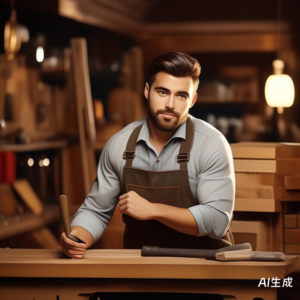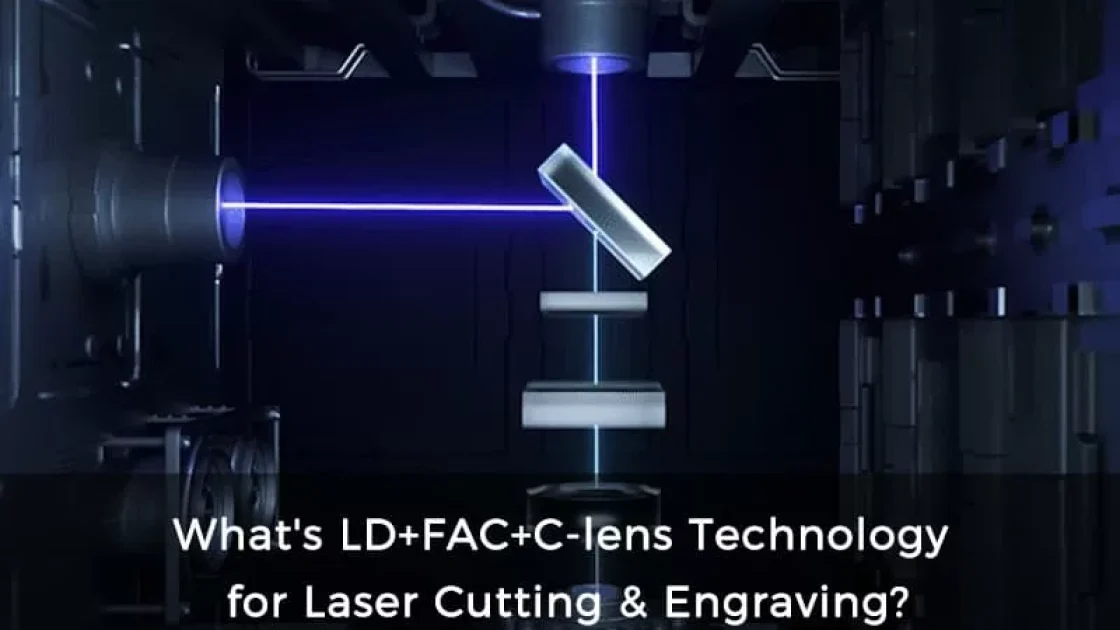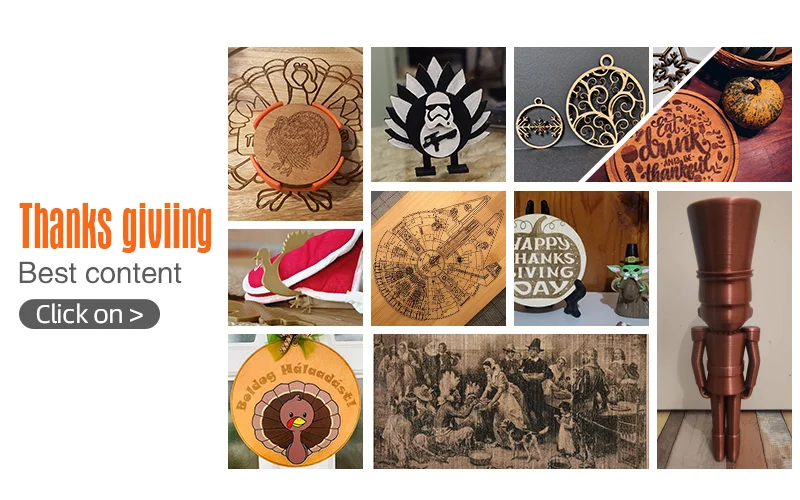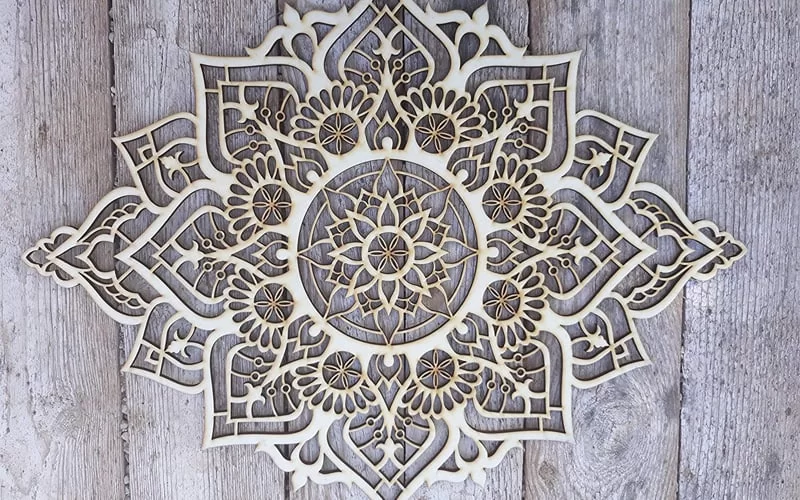The most common technology used for consumer laser cutting and engraving machines is LD + C-lens. In LD+C-lens, light emitted from a semiconductor laser (LD) would be focused into a narrow laser beam with the assistance of a C-lens to realize cutting and engraving. In many cases, it would do the job well, but for challenging materials and projects, it requires more advanced technology to get the more focused and powerful beam to achieve the intended design. That’s the most important reason for the invention of LD+FAC+C-lens.
What’s LD+FAC+C-lens?
Since the light from an LD has a large divergence angle in the fast-axis direction, it can hardly be efficiently used unless being compressed. Though a C-lens would do part of the job, a large portion of light would just vanish during this process and fails to perform. To increase the light efficiency, a FAC lens is utilized to compress and collimate light to a more focused laser beam thus avoiding light depletion.

Why is LD+FAC+C-lens Better?
To evaluate the quality and performance of any laser module or laser cutting & engraving machine, here are the four most important aspects to be concerned.
- Working power of laser: It’s obvious that a higher working power ensures a more powerful laser spot to process more materials. Our working power of each LD is 5W and our laser module combines two LDs into one focused laser beam for the optimized results. (Most market product options claimed their power by electronics power instead of working power, that’s quite misleading and provides no valuable information.)
- Size & Diameter of laser spot: When the same power or energy is focused on a smaller spot, it would offer a stronger penetration force. Since light is collimated ahead before being compressed again by C-lens, LD+FAC+C-lens provides a laser spot of 0.08mm diameter in both fast-axis and slow-axis. And
- The divergence angle of fast-axis: For laser light, when the divergence angle is larger at the fast-axis direction, the light and energy are with really pour focus and becomes weak. In an LD+FAC+C-lens module, the divergence angle is collimated into a narrow-angle beam to preserve most light and energy into laser spot.
- Reliability of whole laser system: It can hardly be told which technology has better performance in reliability but a general lifespan of an LD would be over 10,000 hours means you won’t need to replace LD for whole life.
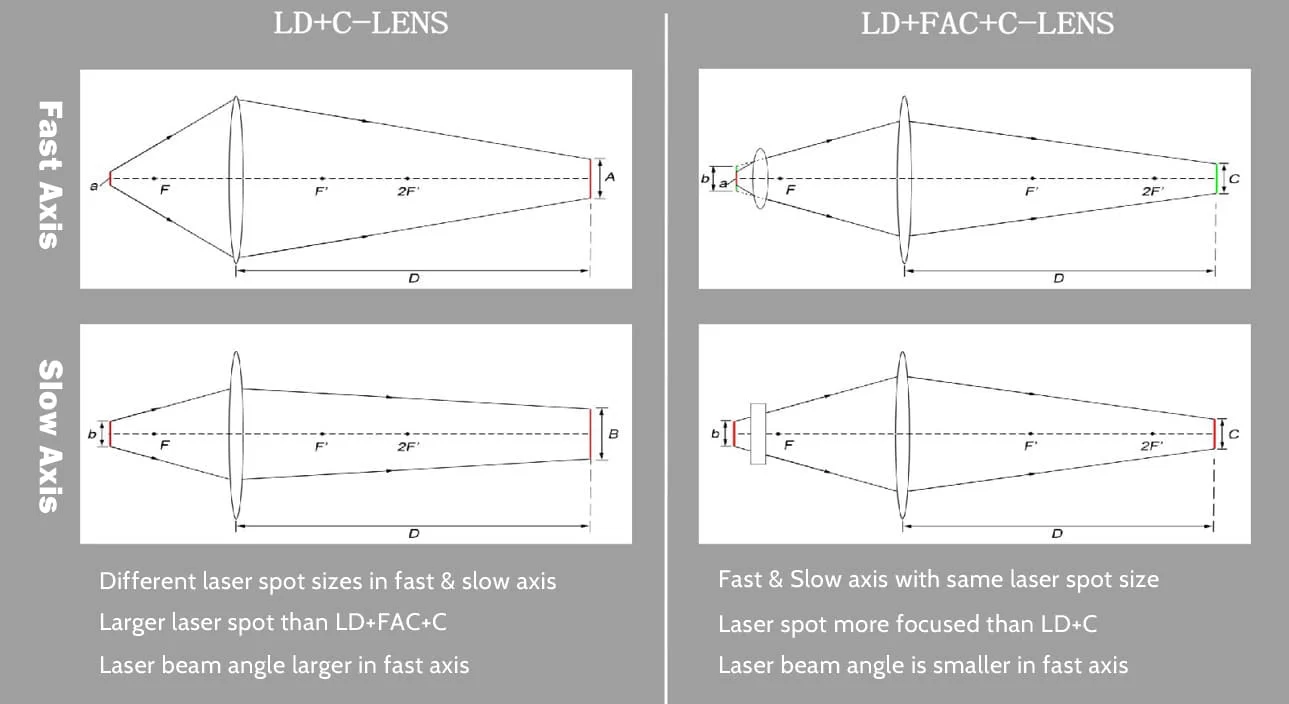
Advantages of LD+FAC+C-lens Over LD+C-lens in Testing & Application
1st: More Powerful & Efficient
In my previous content, I have explained how to tell the quality and performance of a laser cutting & engraving machine. Among the four factors, working power would be the most important fact to check before choosing the right machine. The fundamental operating principle determines that these two technologies have very different working power. To have a better idea of the difference, we have tested to cut a 4mm wood with single LD of both LD+C-lens and LD+FAC+C-lens technology. Here is a cutting performance comparison image of the different technology. You might also check the following testing comparing images to cut 4mm wood with single LD. Compared with LD+C-lens technology, the former one cuts a deeper depth with clearer & thinner lines and leaves fewer burning trails.
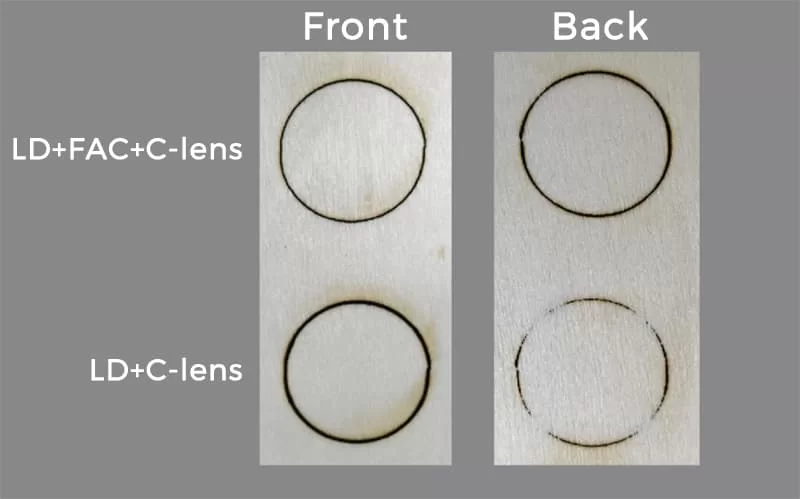
2nd: More Efficient in Light Transmission
These two technologies also perform quite differently in terms of light preservation and transmission. To prove the difference, we run a test for both technologies. We tested the original LD power and the working power of the most focused laser spot. For LD+C-lens, only 76% of the 5.11W light from LD is efficiently converted into the focused laser spot with a working power of 3.89W. However, 97.3% of the 5.23W laser light is converted into the 5.09W laser spot through LD+FAC+C-lens technology. It’s obvious that LD+FAC+C-lens has a higher working power and is more efficient in light transmission.

3rd: Better Cutting & Engraving Trails
Because of the 0.08mm compressed laser spot which is much smaller than that from LD+C-lens technology, it provides clearer & thinner cutting lines & trails as the above image shows. What’s more, since the light from LD+FAC+C-lens is collimated, the device has the same laser spot size at both fast-axis and slow-axis directions.

The collimated light beam not only preserves more light sources for higher power but also presents well-balanced cutting & engraving lines from horizontal & vertical directions. This might be safely ignored when cutting circles but have a great impact beyond your imagination while cutting a rectangular design. If you have no idea, the below image would remove your confusion.

4th: More Aggressive Approach
To realize the full potential of this unique technology, we take a more aggressive approach and utilize 2pcs separate 5W LD+FAC parts to integrate them into one laser module to enhance their advantages and functions. The highly compressed laser spot enables a laser machine to cut 8mm plywood easier with a single cut.
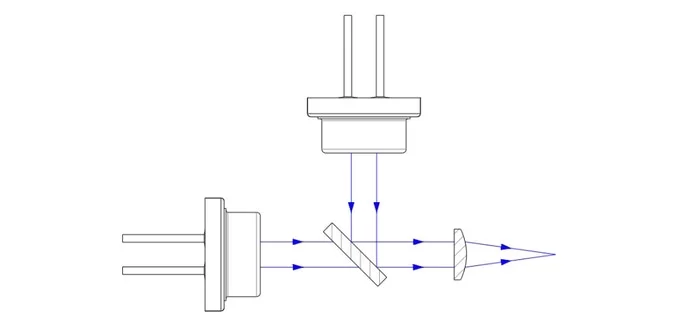
These unique settings have been applied to our TS3 laser cutter & engraver which would soon be launched on the Kickstarter website. It’s one of the most powerful and safest laser cutting & engraving machine we have ever built. If you are interested to test or backup our project, please visit our landing page, register our newsletter to get updates on the project.
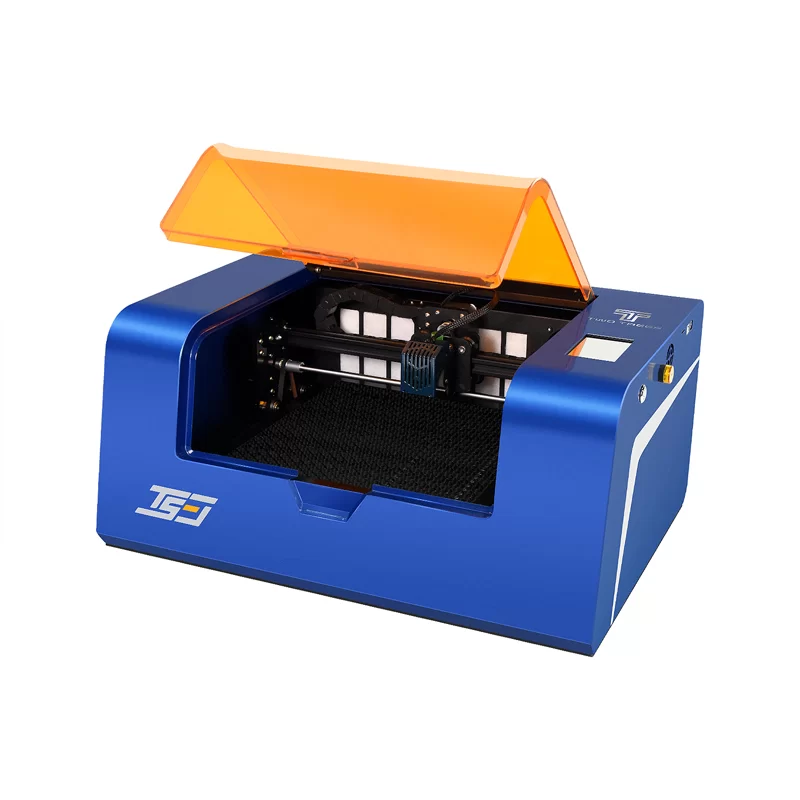
Conclusion
After running a few tests, the advantages of LD+FAC+C-lens over the traditional LD+C-lens are quite obvious. The LD+FAC+C-lens tech is much more powerful with higher light transmission efficiency and leaves clearer and thinner lines and trails. It won’t take long for this technology to domain the consumer laser cutting & engraving technology and it’s a really good time to utilize this cool technology in the application and stay ahead of your competitors.

